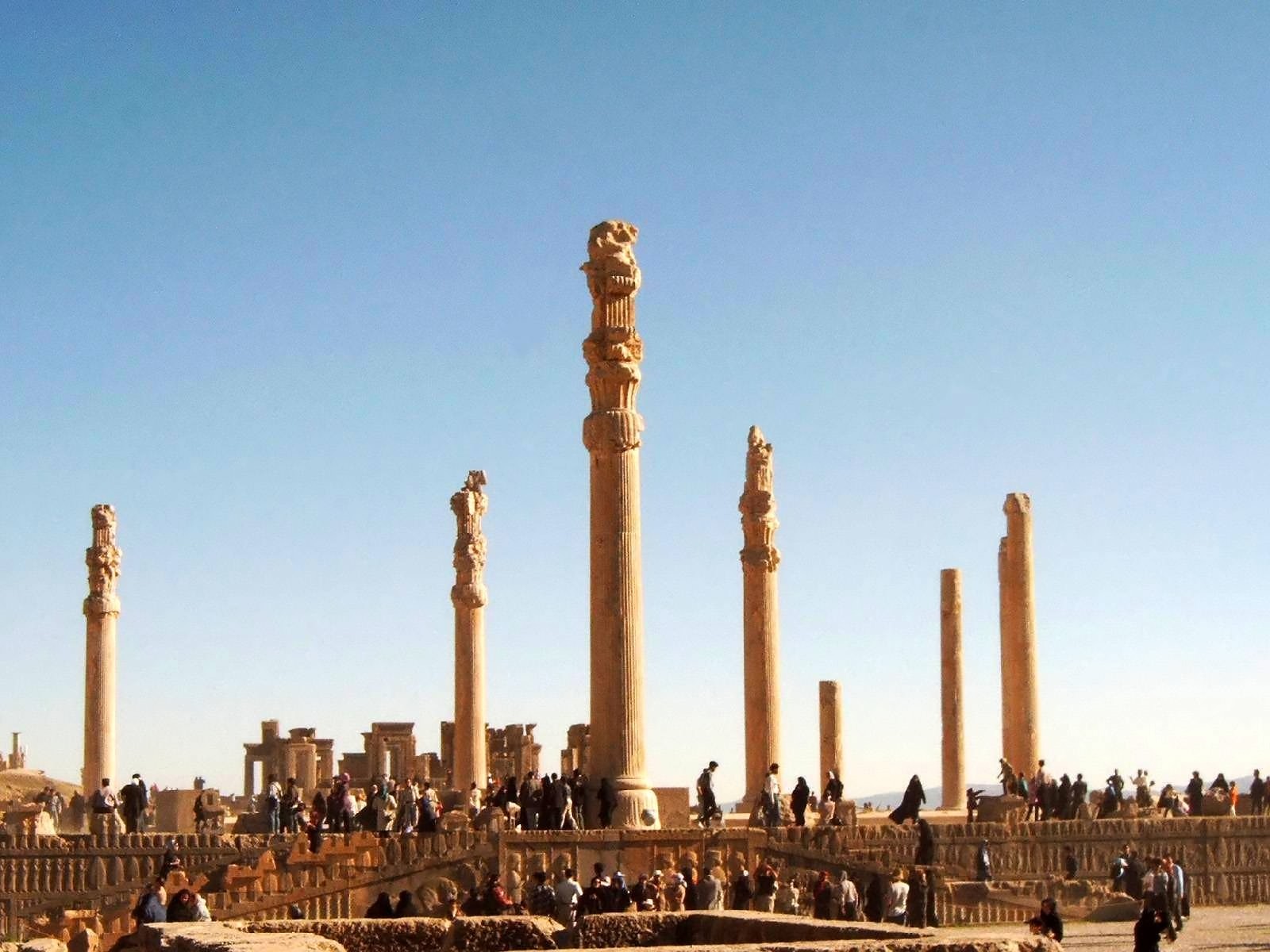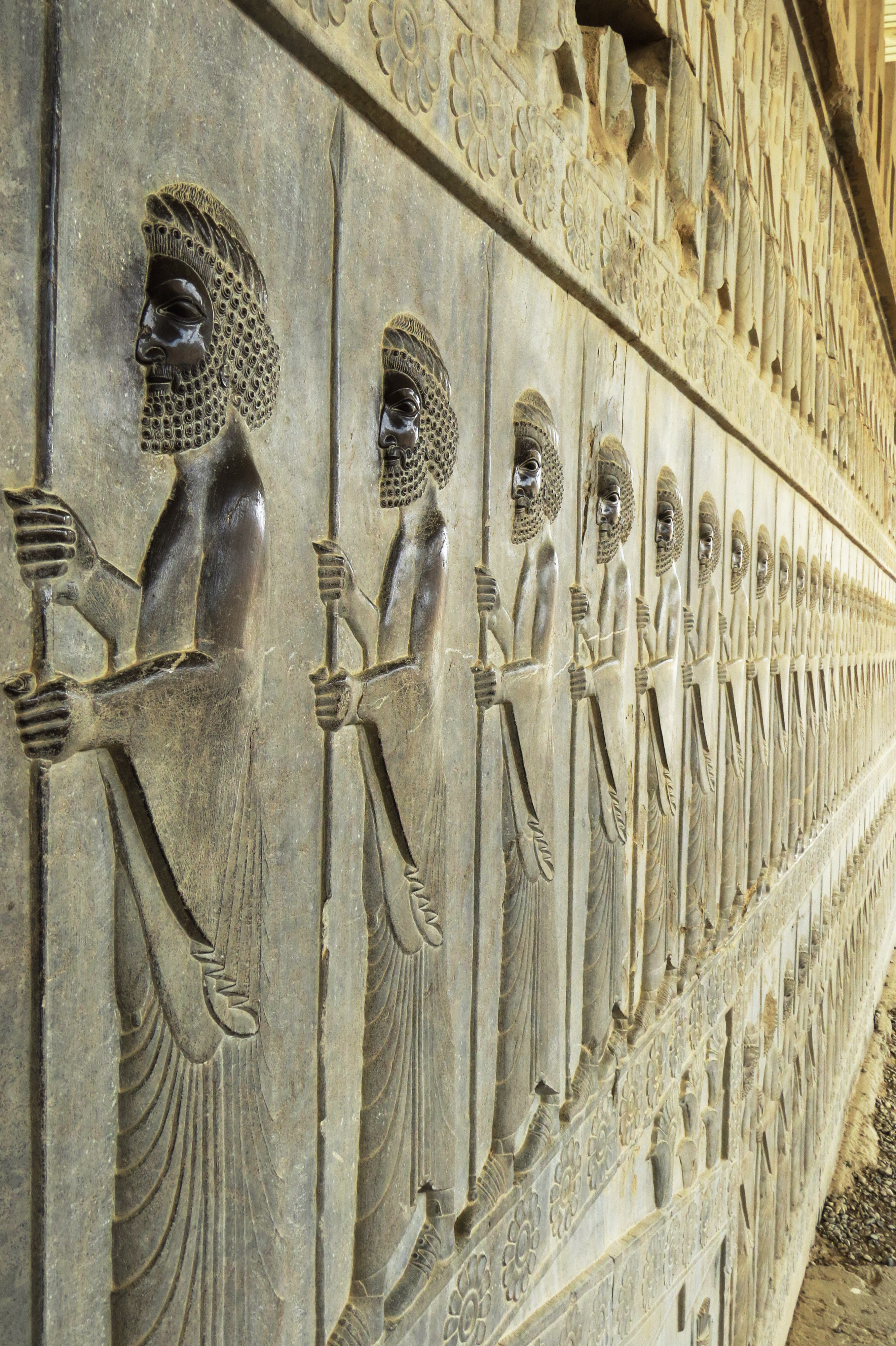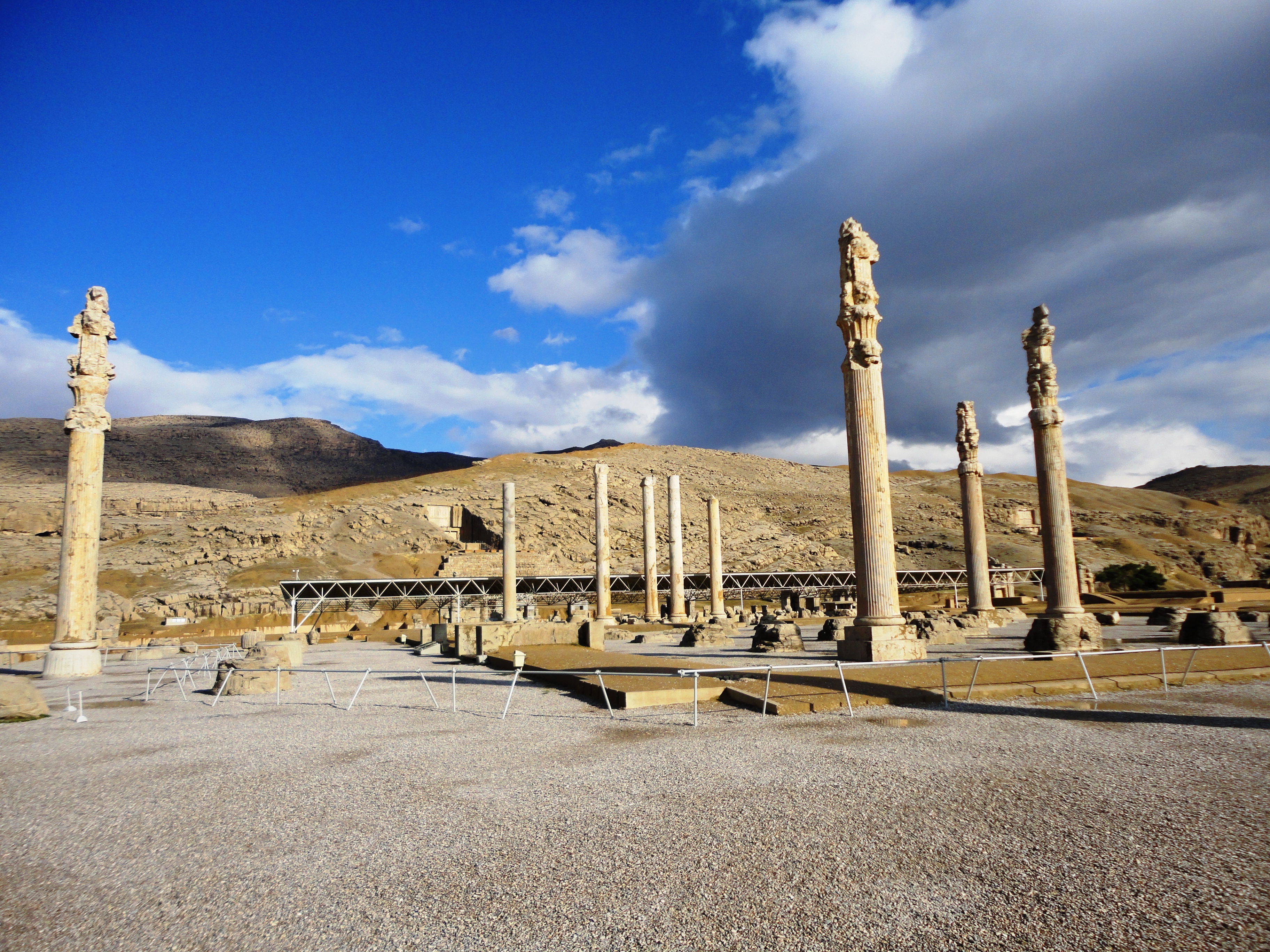Apadana on:
[Wikipedia]
[Google]
[Amazon]


 Apadana (, or ) is a large
Apadana (, or ) is a large

 The Apadana was the largest building on the Terrace at Persepolis and was excavated by the German archaeologist Ernst Herzfeld and his assistant Friedrich Krefter, and Erich Schmidt, between 1931 and 1939. Important material relevant to the excavations are today housed in the archives of the
The Apadana was the largest building on the Terrace at Persepolis and was excavated by the German archaeologist Ernst Herzfeld and his assistant Friedrich Krefter, and Erich Schmidt, between 1931 and 1939. Important material relevant to the excavations are today housed in the archives of the
Oriental Institute Photographic Archives
a virtual reconstruction of Apadana {{Fars Province Buildings and structures completed in the 5th century BC Achaemenid architecture Architecture in Iran Persepolis

 Apadana (, or ) is a large
Apadana (, or ) is a large hypostyle
In architecture, a hypostyle () hall has a roof which is supported by columns.
Etymology
The term ''hypostyle'' comes from the ancient Greek ὑπόστυλος ''hypóstȳlos'' meaning "under columns" (where ὑπό ''hypó'' means below or und ...
hall in Persepolis
Persepolis (; ; ) was the ceremonial capital of the Achaemenid Empire (). It is situated in the plains of Marvdasht, encircled by the southern Zagros mountains, Fars province of Iran. It is one of the key Iranian cultural heritage sites and ...
, Iran
Iran, officially the Islamic Republic of Iran (IRI) and also known as Persia, is a country in West Asia. It borders Iraq to the west, Turkey, Azerbaijan, and Armenia to the northwest, the Caspian Sea to the north, Turkmenistan to the nort ...
. It belongs to the oldest building phase of the city of Persepolis, in the first half of the 5th century BC, as part of the original design by Darius the Great
Darius I ( ; – 486 BCE), commonly known as Darius the Great, was the third King of Kings of the Achaemenid Empire, reigning from 522 BCE until his death in 486 BCE. He ruled the empire at its territorial peak, when it included much of West A ...
. Its construction was completed by Xerxes I
Xerxes I ( – August 465 BC), commonly known as Xerxes the Great, was a List of monarchs of Persia, Persian ruler who served as the fourth King of Kings of the Achaemenid Empire, reigning from 486 BC until his assassination in 465 BC. He was ...
. Modern scholarship "demonstrates the metaphorical nature of the Apadana reliefs as idealised social orders". M. Root (1986) p. 1.
Etymology
As a word, (Old Persian
Old Persian is one of two directly attested Old Iranian languages (the other being Avestan) and is the ancestor of Middle Persian (the language of the Sasanian Empire). Like other Old Iranian languages, it was known to its native speakers as (I ...
𐎠𐎱𐎭𐎠𐎴, masc.) is used to designate a hypostyle hall, i.e., a palace or audience hall of stone construction with columns. The word is rendered in Elamite
Elamite, also known as Hatamtite and formerly as Scythic, Median, Amardian, Anshanian and Susian, is an extinct language that was spoken by the ancient Elamites. It was recorded in what is now southwestern Iran from 2600 BC to 330 BC. Elamite i ...
as ''ha-ha-da-na'' and in Babylonian ''ap-pa-da-an'' is etymologically ambiguous. It has been compared to the Sanskrit
Sanskrit (; stem form ; nominal singular , ,) is a classical language belonging to the Indo-Aryan languages, Indo-Aryan branch of the Indo-European languages. It arose in northwest South Asia after its predecessor languages had Trans-cultural ...
(आपादन) which means 'to arrive at', and also to the Sanskrit ''apa-dhā'' (अपधा) which means "a hide-out or concealment", and the Greek
Greek may refer to:
Anything of, from, or related to Greece, a country in Southern Europe:
*Greeks, an ethnic group
*Greek language, a branch of the Indo-European language family
**Proto-Greek language, the assumed last common ancestor of all kno ...
(), meaning "storehouse". The word survived into later periods in Iran, as the Parthian ''Arabic
Arabic (, , or , ) is a Central Semitic languages, Central Semitic language of the Afroasiatic languages, Afroasiatic language family spoken primarily in the Arab world. The International Organization for Standardization (ISO) assigns lang ...
(transliteration
Transliteration is a type of conversion of a text from one script to another that involves swapping letters (thus '' trans-'' + '' liter-'') in predictable ways, such as Greek → and → the digraph , Cyrillic → , Armenian → or L ...
: ''fadan'') for "palace" and the Armenian
Armenian may refer to:
* Something of, from, or related to Armenia, a country in the South Caucasus region of Eurasia
* Armenians, the national people of Armenia, or people of Armenian descent
** Armenian diaspora, Armenian communities around the ...
'' aparan-kʿ'' for "palace".)
As a modern architectural and archaeological term, the word ''apadana'' is also used to refer to Urartian hypostyle halls, such as those excavated at Altintepe and Erebuni. These halls predate those from Persia, and it has been proposed that Urartu could be the stylistic origin of the later Persian hypostyle audience halls.
Apadana Palace in Susa
The Apadana Palace inSusa
Susa ( ) was an ancient city in the lower Zagros Mountains about east of the Tigris, between the Karkheh River, Karkheh and Dez River, Dez Rivers in Iran. One of the most important cities of the Ancient Near East, Susa served as the capital o ...
started construction during the reign of Darius after the overall plan was chosen in 515 BC but it was finished during the reign of Xerxes I
Xerxes I ( – August 465 BC), commonly known as Xerxes the Great, was a List of monarchs of Persia, Persian ruler who served as the fourth King of Kings of the Achaemenid Empire, reigning from 486 BC until his assassination in 465 BC. He was ...
. The walls of this palace are made of clay with a brick facade and its columns are made of stone. Its inner walls were covered with glazed brick reliefs and featured soldiers of the Eternal Guard, a winged lion, and a lotus flower. Important parts of the Apadana Palace caught fire during the reign of Artaxerxes I (461 BC) and were rebuilt during the reign of Artaxerxes II (359 BC).
Description

 The Apadana was the largest building on the Terrace at Persepolis and was excavated by the German archaeologist Ernst Herzfeld and his assistant Friedrich Krefter, and Erich Schmidt, between 1931 and 1939. Important material relevant to the excavations are today housed in the archives of the
The Apadana was the largest building on the Terrace at Persepolis and was excavated by the German archaeologist Ernst Herzfeld and his assistant Friedrich Krefter, and Erich Schmidt, between 1931 and 1939. Important material relevant to the excavations are today housed in the archives of the Freer Gallery of Art
The Freer Gallery of Art is an art museum of the Smithsonian Institution in Washington, D.C. focusing on Asian art. The Freer and the Arthur M. Sackler Gallery together form the National Museum of Asian Art in the United States. The Freer and ...
in Washington, DC.
Measurements
The Apadana at Persepolis has a surface of 1000 square metres; its roof was supported by 72 columns, each 24 metres tall. The entire hall was destroyed in 331 BC by the army ofAlexander the Great
Alexander III of Macedon (; 20/21 July 356 BC – 10/11 June 323 BC), most commonly known as Alexander the Great, was a king of the Ancient Greece, ancient Greek kingdom of Macedonia (ancient kingdom), Macedon. He succeeded his father Philip ...
. Stones from the columns were used as building material
Building material is material used for construction. Many naturally occurring substances, such as clay, rocks, sand, wood, and even twigs and leaves, have been used to construct buildings and other structures, like bridges. Apart from natur ...
for nearby settlements. By the start of the 20th century, only 13 of these giant columns were still standing. The re-erecting of a complete, but fallen column in the 1970s, is now the 14th standing column of the Apadana.
The Apadana in Susa was—like the city itself—largely abandoned, and pillaged for building material.
Legacy
The apadana hall influenced the Umayyad architecture. Early mosques built in Persia and Iraq imitate this structure.References
Bibliography
* *External links
Oriental Institute Photographic Archives
a virtual reconstruction of Apadana {{Fars Province Buildings and structures completed in the 5th century BC Achaemenid architecture Architecture in Iran Persepolis